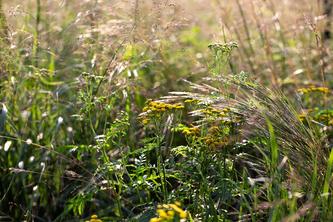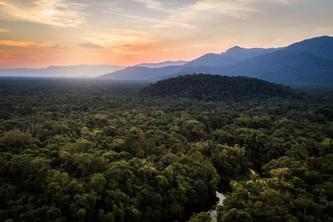U of M awarded $12.5 million to create new institute to further understanding of the impact of biodiversity change on Earth

With the goal of revolutionizing how the world understands the causes and consequences of biodiversity loss, the University of Minnesota has been awarded a $12.5 million grant by the National Science Foundation (NSF) to establish the Biology Integration Institute (BII). Based on the Twin Cities campus, it is conducted in partnership with researchers at the University of Wisconsin-Madison.
The BII is the only research institute of its kind aimed at using spectral biology to create a greater understanding of plant and vegetation biodiversity from the genome to the global scale. Spectral biology uses the way light interacts with matter — in this case, plants — to reveal information about their chemistry, structure and function.
“We aim to uncover how the biological variation within and among species across the tree of life — detected in vegetation with hyperspectral sensors from handheld instruments, aircraft and satellites using a common currency of photons reflected from the sun — influences ecosystem and biosphere dynamics,” said Jeannine Cavender-Bares, BII director and professor in the U of M’s College of Biological Sciences. “Our ability to do this will be key to not only understanding biodiversity now, but providing the ability to track biodiversity loss in real-time around the globe.”
The Institute will take advantage of NSF’s National Ecological Observatory Network (NEON), with researchers seeking to advance the ability to track the causes and consequences of biodiversity loss globally through spectral imaging. The Institute will inform analysis from NASA’s global Surface Biology and Geology satellite mission, which will focus — in part — in creating a baseline measurement of global biodiversity. UW-Madison Professor and Institute co-director Philip Townsend has been involved in advancing the satellite toward the goal of measuring and monitoring vegetation chemistry and physiology. The satellite is set to launch around 2027.
“Changes to ecosystems can have very real human impacts, affecting where people live, their livelihoods, and even the availability of food and a habitable environment,” said Cavender-Bares. “Our ability to track these changes across the planet is critical to meeting global biodiversity targets and managing sustainability.”
The BII will incorporate spectral data into predictive models that advance theory on how life’s variation influences the Earth system in an era of rapid global change. It takes advantage of ongoing global change experiments led by Peter Reich, a professor at the U of M’s College of Food, Agricultural and Natural Resource Sciences and an Institute co-director.
Additionally, as part of the BII’s mission, the Institute aims to recruit non-traditional and underrepresented peoples in biology for mentoring and training opportunities. This also includes work to foster curiosity in young scientists by working with K-12 students and Indigenous communities through long-term mentoring programs, Market Science modules, Minute Earth videos, and partnerships with the Bell Museum, Cedar Creek Ecosystem Science Reserve and Wisconsin Tribal Conservation Association.
“We are committed to promoting diversity and fostering inclusivity through our engagement activities, including with the Wisconsin Tribal Conservation Advisory Council, to share cultural and scientific knowledge, foster cultural awareness and respect, and broaden participation of Native students in graduate programs,” said Amy Trowbridge, a co-PI and assistant professor in the Dept. of Entomology at UW-Madison.
The BII is funded by the National Science Foundation Award #2021898.
- 30 -
About the College of Biological Sciences
The College of Biological Sciences at the University of Minnesota is one of two colleges in the United States dedicated to the biological sciences with undergraduate majors and graduate programs that cover the spectrum of life from molecules to ecosystems. Learn more at cbs.umn.edu.
- Categories:
- Agriculture and Environment





